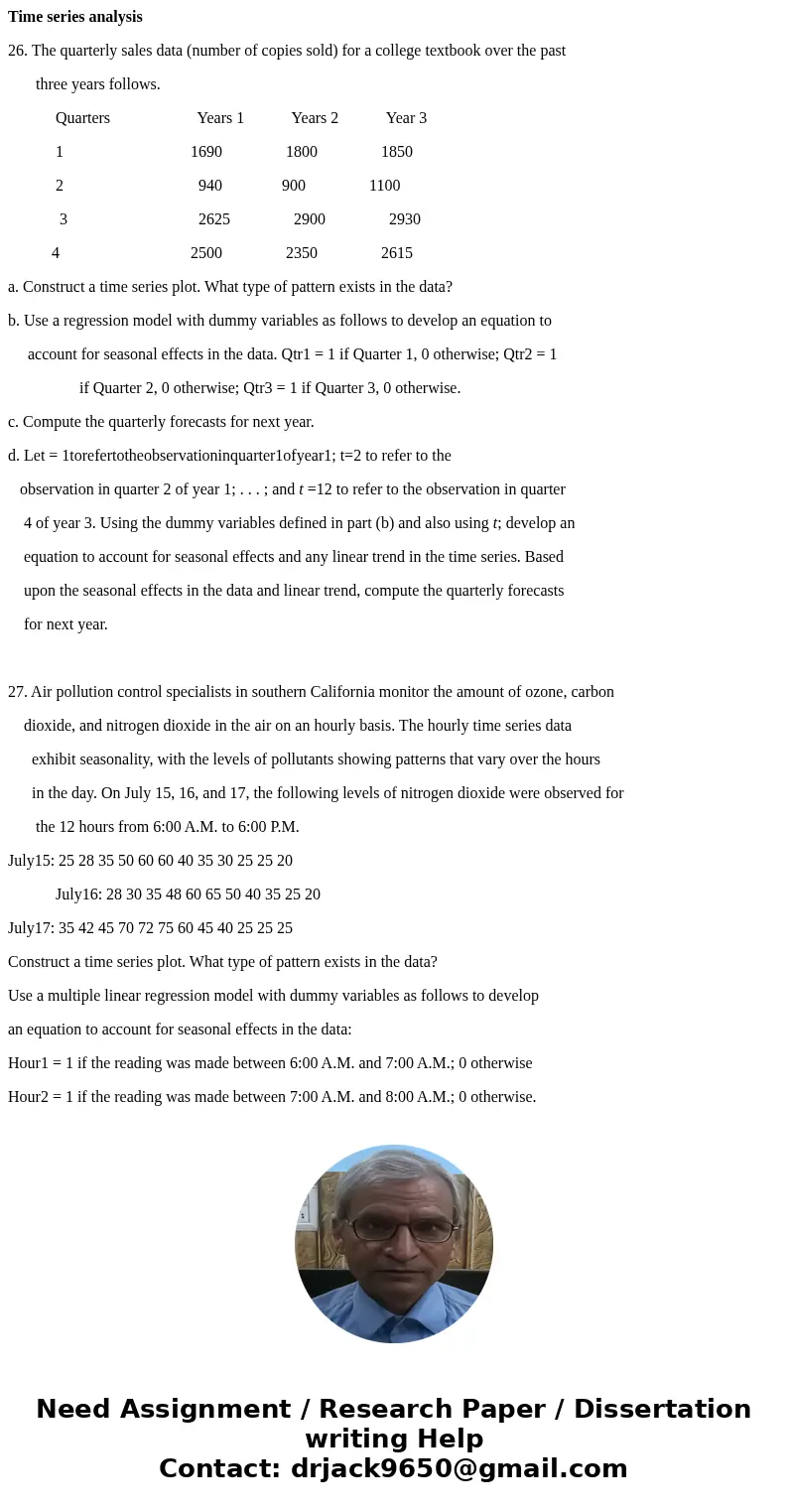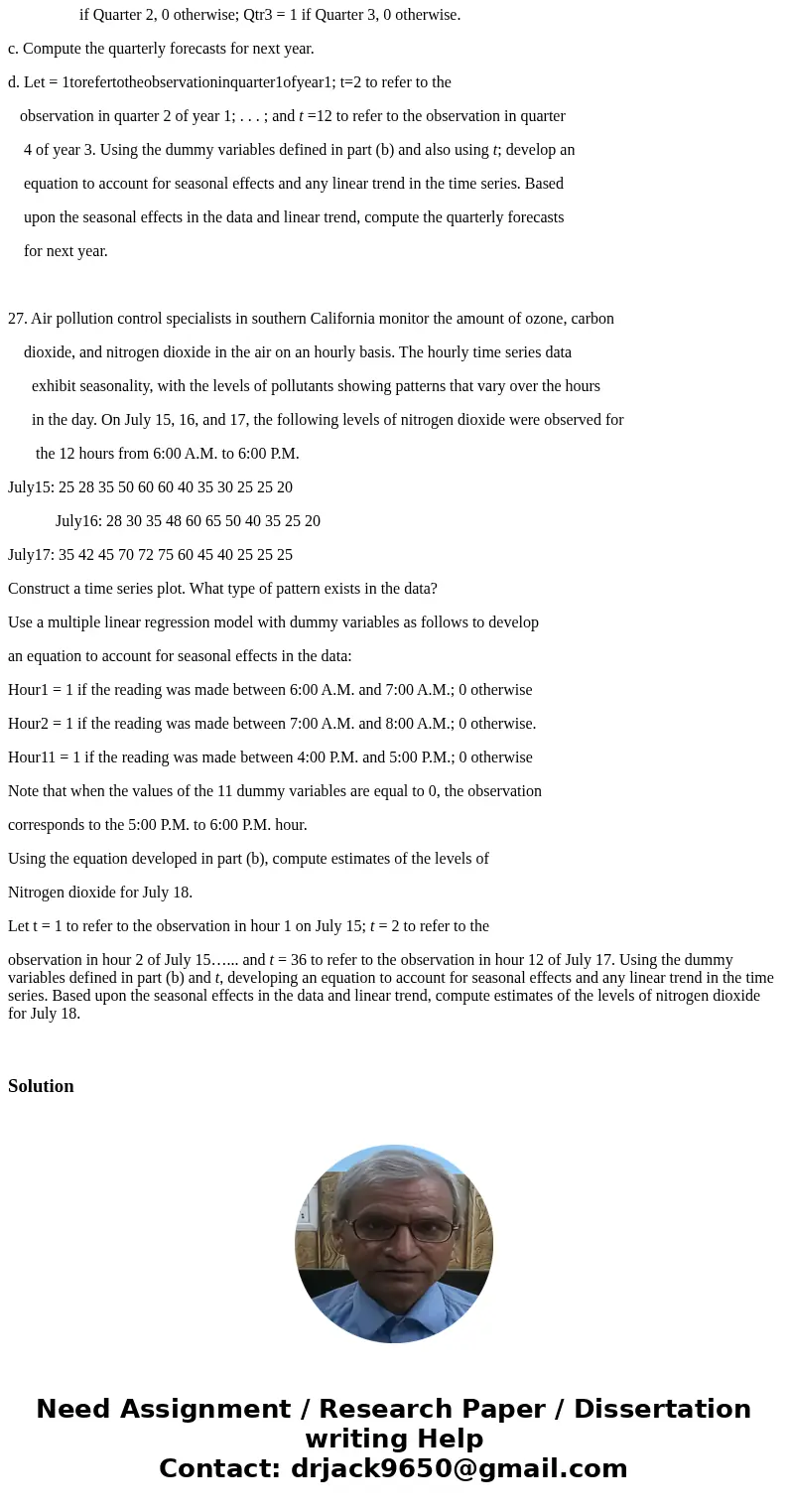Time series analysis 26 The quarterly sales data number of c
Time series analysis
26. The quarterly sales data (number of copies sold) for a college textbook over the past
three years follows.
Quarters Years 1 Years 2 Year 3
1 1690 1800 1850
2 940 900 1100
3 2625 2900 2930
4 2500 2350 2615
a. Construct a time series plot. What type of pattern exists in the data?
b. Use a regression model with dummy variables as follows to develop an equation to
account for seasonal effects in the data. Qtr1 = 1 if Quarter 1, 0 otherwise; Qtr2 = 1
if Quarter 2, 0 otherwise; Qtr3 = 1 if Quarter 3, 0 otherwise.
c. Compute the quarterly forecasts for next year.
d. Let = 1torefertotheobservationinquarter1ofyear1; t=2 to refer to the
observation in quarter 2 of year 1; . . . ; and t =12 to refer to the observation in quarter
4 of year 3. Using the dummy variables defined in part (b) and also using t; develop an
equation to account for seasonal effects and any linear trend in the time series. Based
upon the seasonal effects in the data and linear trend, compute the quarterly forecasts
for next year.
27. Air pollution control specialists in southern California monitor the amount of ozone, carbon
dioxide, and nitrogen dioxide in the air on an hourly basis. The hourly time series data
exhibit seasonality, with the levels of pollutants showing patterns that vary over the hours
in the day. On July 15, 16, and 17, the following levels of nitrogen dioxide were observed for
the 12 hours from 6:00 A.M. to 6:00 P.M.
July15: 25 28 35 50 60 60 40 35 30 25 25 20
July16: 28 30 35 48 60 65 50 40 35 25 20
July17: 35 42 45 70 72 75 60 45 40 25 25 25
Construct a time series plot. What type of pattern exists in the data?
Use a multiple linear regression model with dummy variables as follows to develop
an equation to account for seasonal effects in the data:
Hour1 = 1 if the reading was made between 6:00 A.M. and 7:00 A.M.; 0 otherwise
Hour2 = 1 if the reading was made between 7:00 A.M. and 8:00 A.M.; 0 otherwise.
Hour11 = 1 if the reading was made between 4:00 P.M. and 5:00 P.M.; 0 otherwise
Note that when the values of the 11 dummy variables are equal to 0, the observation
corresponds to the 5:00 P.M. to 6:00 P.M. hour.
Using the equation developed in part (b), compute estimates of the levels of
Nitrogen dioxide for July 18.
Let t = 1 to refer to the observation in hour 1 on July 15; t = 2 to refer to the
observation in hour 2 of July 15…... and t = 36 to refer to the observation in hour 12 of July 17. Using the dummy variables defined in part (b) and t, developing an equation to account for seasonal effects and any linear trend in the time series. Based upon the seasonal effects in the data and linear trend, compute estimates of the levels of nitrogen dioxide for July 18.
Solution


 Homework Sourse
Homework Sourse